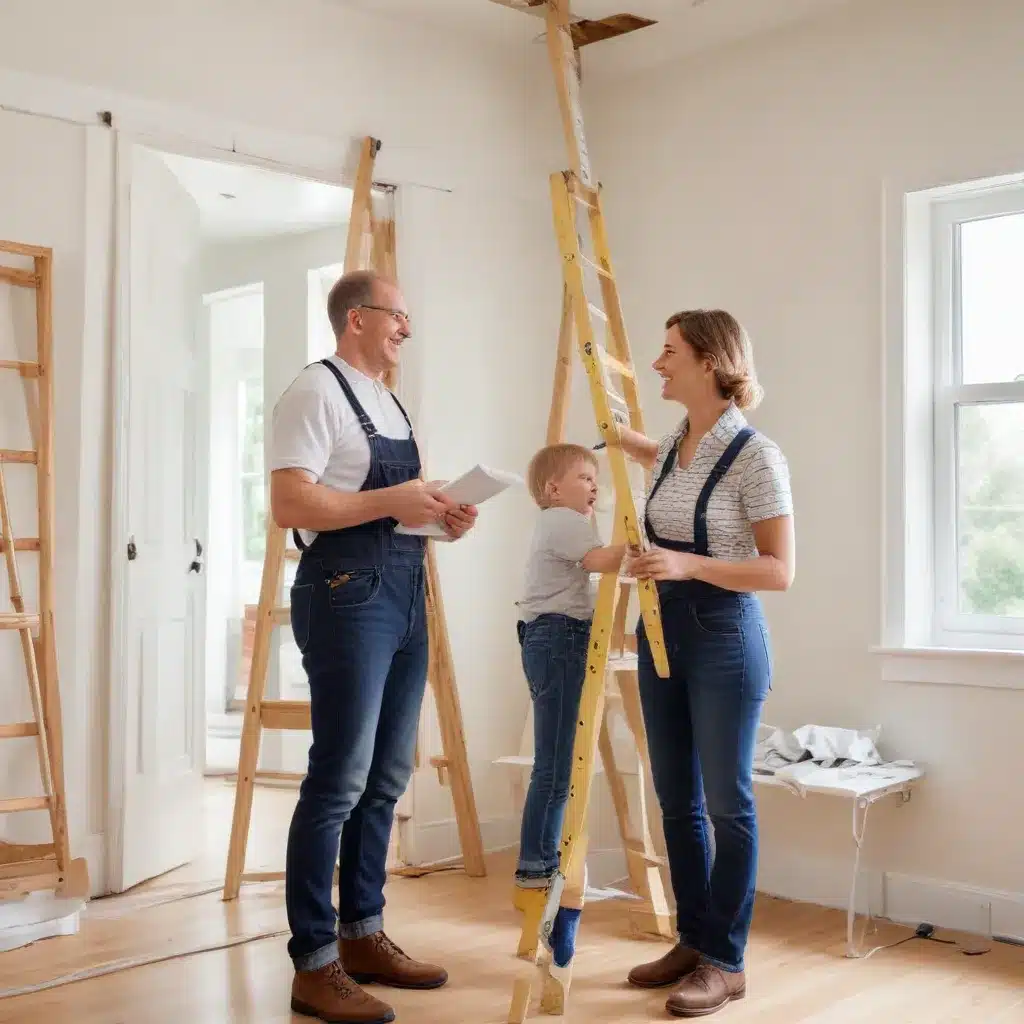
As an experienced home improvement consultant, I’ve seen firsthand how energy-efficient renovations can dramatically improve a household’s bottom line while also benefiting the environment. Whether you’re a budget-conscious homeowner or a family seeking to create a more sustainable, comfortable living space, embracing energy-efficient solutions can unlock significant long-term savings on utility bills.
In this comprehensive guide, I’ll share a wealth of practical insights to help you navigate the world of eco-friendly home improvements, from insulation upgrades and window replacements to renewable energy systems and smart home technologies. We’ll also explore creative financing options and valuable government incentives that can make these upgrades more accessible. By the end, you’ll have a roadmap for transforming your home into an oasis of energy efficiency and cost savings.
Cost-Saving Measures
One of the most impactful ways to reduce your home’s energy consumption – and your monthly utility bills – is through strategic insulation upgrades. Older homes in particular often have insufficient insulation, allowing heated or cooled air to escape through walls, ceilings, and floors. Investing in high-performance blown-in insulation or spray foam insulation can dramatically improve your home’s thermal envelope, keeping your living spaces comfortable while minimizing the workload on your HVAC system.
Another worthwhile project is replacing outdated windows with energy-efficient models. Modern windows boast advanced features like low-E coatings, argon gas fills, and improved frame designs that dramatically reduce heat transfer. Swapping out single-pane windows for double-hung windows or casement windows can trim your heating and cooling costs by 10-25%.
When it comes to your HVAC system, regular maintenance and strategic upgrades can deliver substantial savings. Something as simple as changing air filters every 1-3 months can improve efficiency and airflow. For greater impact, consider upgrading to a high-efficiency furnace or heat pump – models with ENERGY STAR® ratings can be 15-30% more efficient than older units. Pairing these with a smart thermostat that automatically adjusts temperatures based on your family’s schedule can deliver even greater benefits.
Renewable Energy Solutions
Harnessing the power of renewable energy is another proven path to reducing your home’s carbon footprint and utility bills. Solar panel installation is one of the most popular and accessible options, with costs continuing to decline and generous tax credits and rebates available in many areas. A well-designed solar PV system can offset 50-100% of your electricity usage, shielding your family from volatile energy prices.
For homes with sufficient land, geothermal heating and cooling systems offer an exceptionally efficient alternative to traditional HVAC. By tapping into the stable temperatures just below the earth’s surface, geothermal heat pumps can achieve impressive coefficient of performance (COP) ratings of 3-5, meaning they can deliver 3-5 units of heat for every 1 unit of electricity consumed. While the upfront costs are higher, the long-term savings can be substantial.
In some regions, small-scale wind turbines represent another renewable energy option worth exploring. These systems capture the kinetic energy of the wind to generate electricity, complementing solar power during periods of reduced sunlight. Though not as common as solar, residential wind turbines can be a viable solution for homes with consistent, unobstructed breezes.
Home Automation Technologies
Beyond upgrading physical systems, smart home technologies can further optimize your energy efficiency and cost savings. Programmable thermostats allow you to automatically adjust temperatures based on your family’s schedule, ensuring your HVAC system isn’t working overtime when no one is home. LED light bulb retrofits can cut lighting costs by 75% or more compared to traditional incandescent bulbs, while occupancy sensors ensure lights are only on when rooms are in use.
Integrating these elements into a whole-home automation system enables even greater efficiency. You can remotely control temperatures, lighting, and other appliances from your smartphone, responding to changing conditions or family needs in real-time. Many systems also provide detailed energy usage data, empowering you to identify and address wasteful habits.
Financing and Incentives
The upfront costs of energy-efficient renovations can sometimes feel daunting, but there are numerous financing options and government incentives available to make these upgrades more accessible. Federal tax credits, state and local rebates, and utility company programs can significantly offset the initial investment, shortening the payback period.
Home equity loans and energy-efficient mortgages like Freddie Mac’s GreenCHOICE Mortgages® also provide flexible financing solutions, allowing you to bundle renovation costs into your home loan. Some municipalities even offer property-assessed clean energy (PACE) financing, where improvements are repaid through an annual assessment on your property taxes.
For larger multifamily or commercial buildings, energy performance contracting is an innovative financing model that aligns the interests of building owners, contractors, and utility providers. By guaranteeing energy savings, these agreements help facility managers access critical upgrades without upfront capital investment.
Conclusion
Whether your goal is to create a more comfortable, sustainable home for your family or simply reduce the strain on your monthly budget, embracing energy-efficient renovations is a wise investment. By thoughtfully combining insulation, HVAC upgrades, renewable power, and smart home technologies, you can transform your living space into an oasis of efficiency and cost savings.
As you embark on your home improvement journey, be sure to explore the wealth of resources available at Reluctant Renovator – from budget-friendly projects and eco-friendly solutions to family-friendly designs and expert tips. With the right plan, financing, and execution, your next renovation can deliver lasting benefits for both your household and the planet.



